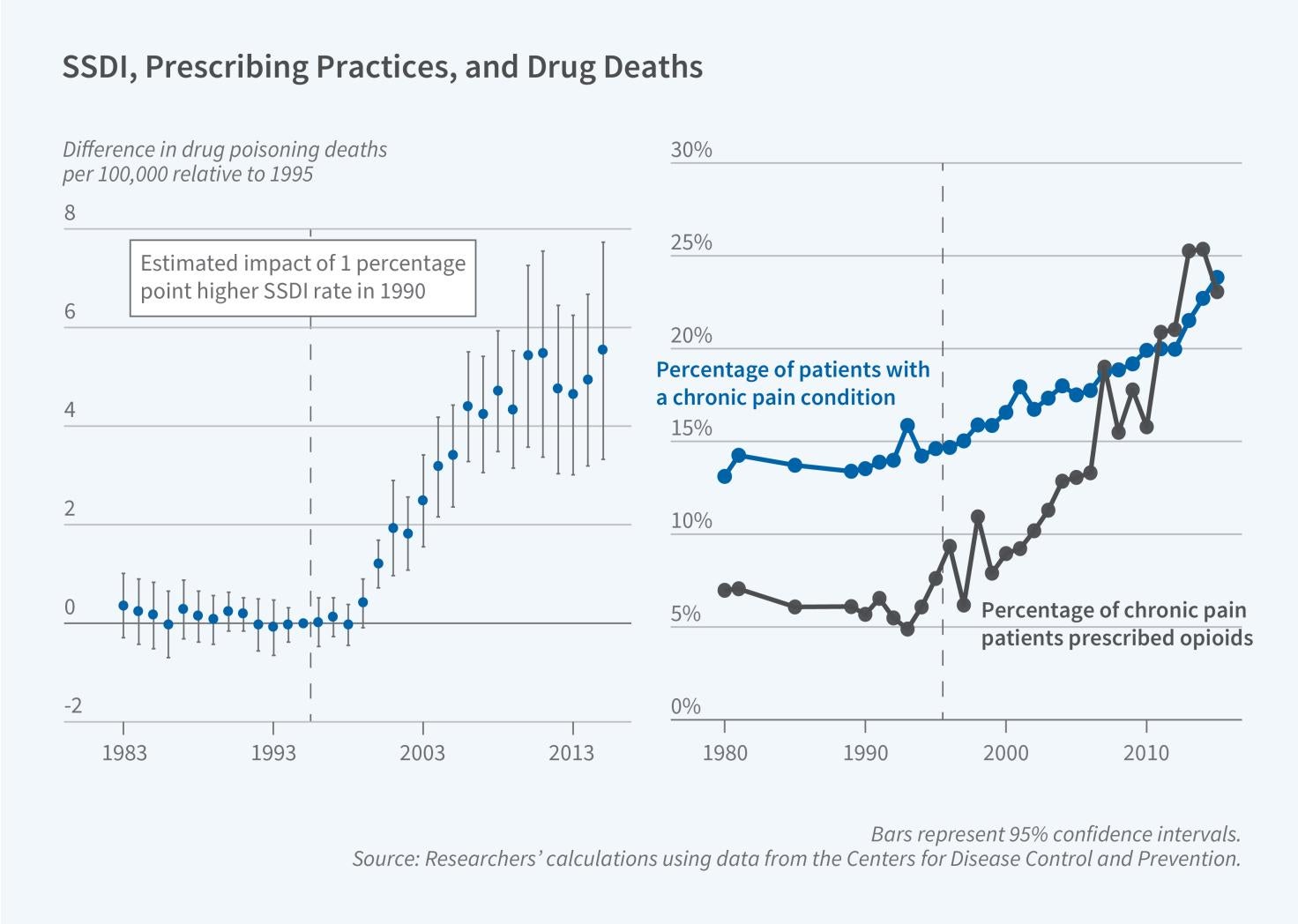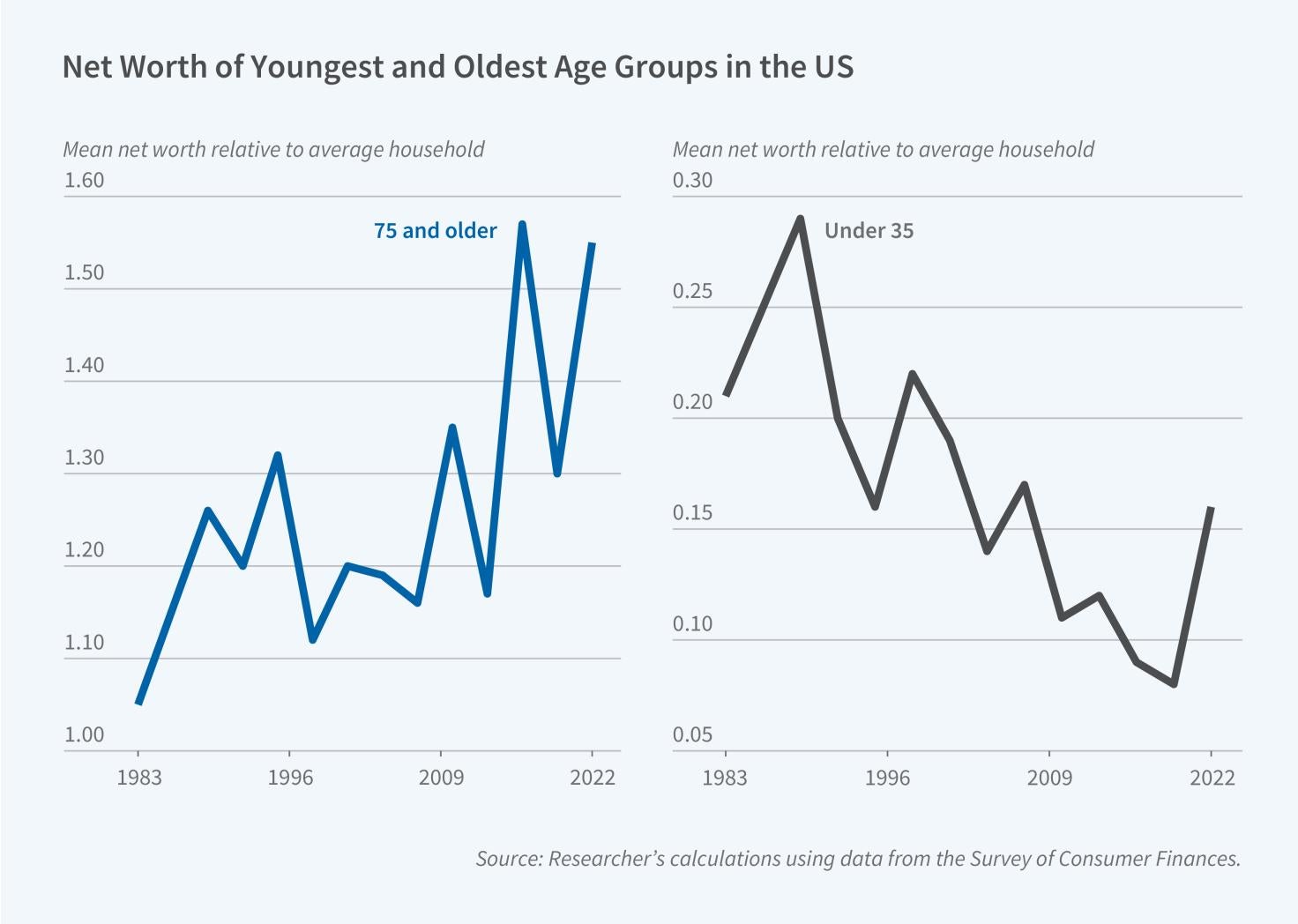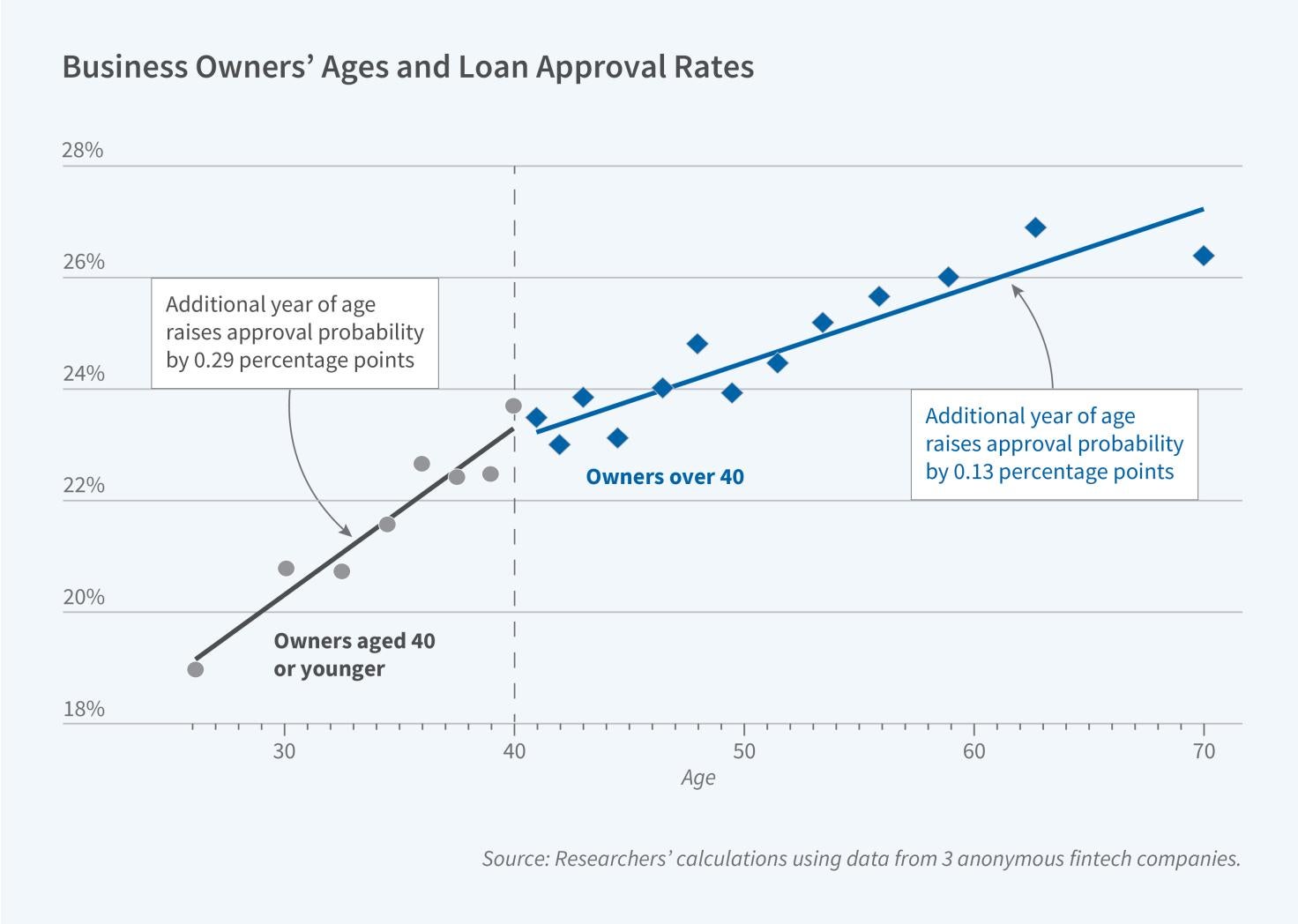National Bureau of Economic Research
Latest from the NBER
From the NBER Bulletin on Health

Pain Management and the Opioid Epidemic
article
Death rates due to drug poisonings began to surge in the US in the mid-1990s, marking the emergence of an epidemic that has persisted for three decades. The health consequences have been stark, with annual deaths exceeding 100,000 since 2021.
In Prescription for Disaster: The SSDI Rate, Pain, and Prescribing Practices (NBER Working Paper 34265), William N. Evans and Ethan M. J. Lieber examine characteristics of counties in 1990—prior to the surge—that predict the county-level severity of opioid deaths after 2000. After considering a wide range of potential determinants, they focus on one factor: the percentage of the working-age population...
A research summary from the monthly NBER Digest

Shifting Wealth of US Age Groups
article
In The Extraordinary Rise in the Wealth of Older American Households (NBER Working Paper 34131), Edward N. Wolff documents changes in age-wealth profiles in the US between 1983 and 2022. Using data from the Federal Reserve’s Survey of Consumer Finances (SCF), he computes the relative wealth changes for different age groups, focusing primarily on the youngest (under 35) and oldest (75 and over) households.
The wealth of households aged 75 and over increased from 5 percent above the overall average in 1983 to 16 percent above it in 2007, then continued to rise to 55 percent above by 2022. Correspondingly, the relative wealth of all other age groups declined during this period. For example, the…

Eric Budish to Codirect Market Design Working Group
news article
Research associate Eric Budish, an affiliate of the Industrial Organization program whose research has applied the tools and insights of market design to a range of settings including financial market, patents and innovation policy, the allocation of scarce resources during pandemics and other emergencies, and blockchains, will become a codirector of the Market Design working group in January 2026. He is the Paul G. McDermott Professor of Economics and Entrepreneurship at the University of Chicago Booth School of Business. Budish will succeed working group Parag Pathak, the Class of 1922 Professor of Economics at MIT, who launched the group in 2008 along with research associate Susan Athey. Budish will codirect the working group with Michael…
From the NBER Reporter: Research, program, and conference summaries

17th Annual Martin Feldstein Lecture, 2025: The Fiscal Future
article
It is a great honor and delight to deliver this year’s Feldstein Lecture. I was never one of Marty’s students—I was educated not at Harvard, but at Princeton and MIT. Yet Marty nonetheless had a profound influence on my life and career.
As a freshman at Princeton in 1977, I took introductory microeconomics from the superb teacher Harvey Rosen, who later hired me to be his research assistant. Harvey was a recent PhD student of Marty’s, so even though I did not know it at the time, I entered the economics profession as Marty’s grandstudent.
Four years later, as a first-year student in MIT’s PhD program, I took a couple of courses from a promising, young assistant professor named Larry Summers, making me Marty’s grandstudent…
From the NBER Bulletin on Entrepreneurship

Underwriting Based on Cash Flow Helps Younger Entrepreneurs Access Credit
article
Younger entrepreneurs are disadvantaged in small business loan markets because lenders rely heavily on personal credit scores, which favor long histories of repaying debt. In Modernizing Access to Credit for Younger Entrepreneurs: From FICO to Cash Flow (NBER Working Paper 33367), researchers Christopher M. Hair, Sabrina T. Howell, Mark J. Johnson, and Siena Matsumoto document this fact and show that younger entrepreneurs benefit from underwriting that augments personal credit scores (like FICO) with cash flow data. They analyze comprehensive…
Featured Working Papers
Households used approximately one-third of their COVID-19 stimulus checks to pay down debt; the marginal propensity to repay debt was largest among those with low net wealth-to-income ratios, according to Gizem Koşar, Davide Melcangi, Laura Pilossoph, and David G. Wiczer.
Vadim Elenev, Tim Landvoigt, and Stijn Van Nieuwerburgh define the “austerity threshold” as the debt-to-GDP level above which the government must raise fiscal surpluses to ensure debt stability and estimate that for the US, this threshold is 189 percent of GDP.
China launched a substantial college expansion effort beginning in 1999. Every increase of 100 Chinese college graduates was associated with about 3.6 Chinese graduate students enrolling in US universities, according to research by Ruixue Jia, Gaurav Khanna, Hongbin Li, and Yuli Xu.
Vellore Arthi, Gary Richardson, Mark Van Orden document that ordinary life insurance policies, which combined savings and insurance, were the most popular financial asset for middle-class American households in the early 20th century, with about a quarter of individuals over age 65 holding policies by 1940. During the Great Depression, these policies outperformed other investments including stocks, bonds, and real estate.
Francesco Bianchi, Era Dabla-Norris, and Salma Khalid survey over 27,000 respondents in 13 countries and find systematic underestimation of sovereign debt levels, particularly in high-debt countries. Those with greater lifetime exposure to fiscal consolidation are more pessimistic about future debt trajectories and less trusting of government.
In the News
Recent citations of NBER research in the media
_______________________________________
Research Projects
Conferences
Books & Chapters
Through a partnership with the University of Chicago Press, the NBER publishes the proceedings of four annual conferences as well as other research studies associated with NBER-based research projects.
Videos
Recordings of presentations, keynote addresses, and panel discussions at NBER conferences are available on the Videos page.